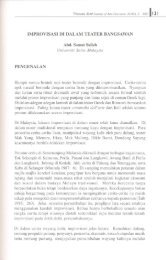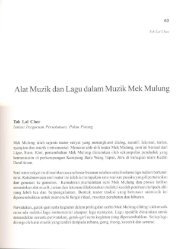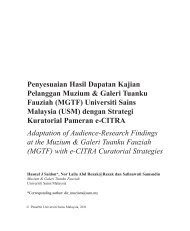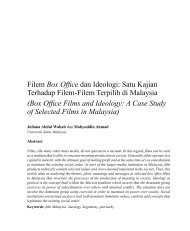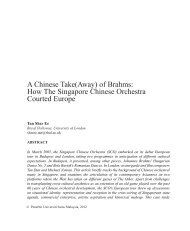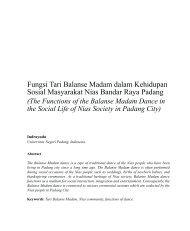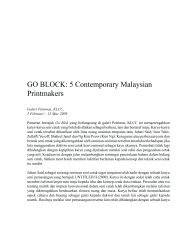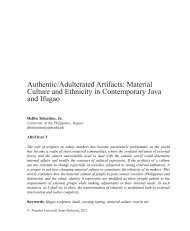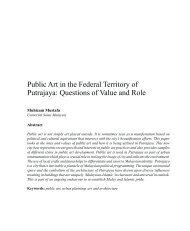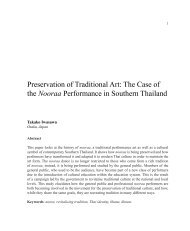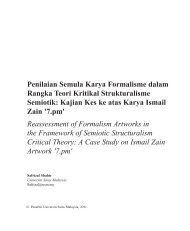Reclaiming The Healing Arts of The Ancient ... - Wacana Seni
Reclaiming The Healing Arts of The Ancient ... - Wacana Seni
Reclaiming The Healing Arts of The Ancient ... - Wacana Seni
Create successful ePaper yourself
Turn your PDF publications into a flip-book with our unique Google optimized e-Paper software.
85Flaudette May V. DatuinIn these women pioneers, sex is aligned with the body's anatomy, its biological and thereforeuniversal given, while gender is aligned with culture, which determines how sex is going to beproduced, accounted for and represented. However, as the "new feminisms" <strong>of</strong> the 1990s havetaught us, and following Judith Butler and Michel Foucault, the body is not just anatomy,but a cultural and psychic space, which has a geographic and historical location. It is nota prediscursive, biological and politically neutral surface on which gender is inscribed. Sexis not to biology as gender is to culture, because sex itself is as culturally constructed andhistorically contingent as gender. My anatomical body itself is the object <strong>of</strong> study, the verybattleground on which cultural constructions and practices compete (Butler 1990: 7; Foucaultin Nettleton and Watson 1998).Thus, as I choose to reread the women's works I encounter, particularly in Southeast Asia, andprobably now, in East Asia, I see a refusal – at times conscious but more <strong>of</strong>ten unconscious– to sever the mind and the body, sex and gender, nature and culture. As Quinto puts it:"Whereas the colonizer emphasised the dualistic body and soul relationship, my work focuseson the unity and dialectical relationship between them. <strong>The</strong> soul dialogues with the body, andthe body in the soul is there to enlarge the soul."<strong>The</strong>se women's works and words show that perceiving and articulating images is not onlyabout sight, but also about gesture, disposition, volition and emotion. <strong>The</strong> body is not justthe physical body, but a psychic and psychological feminine space, which is imaged andimagined, not as a place <strong>of</strong> comfort and reassurance, but a place <strong>of</strong> pain and disquietude, aswell as <strong>of</strong> possible liberation through conflict, negotiation and confrontation. <strong>The</strong> interiors andinterstices <strong>of</strong> the female body – the battleground <strong>of</strong> male creativity – are re-visualised in theirown terms, in their own voice.



